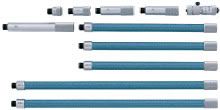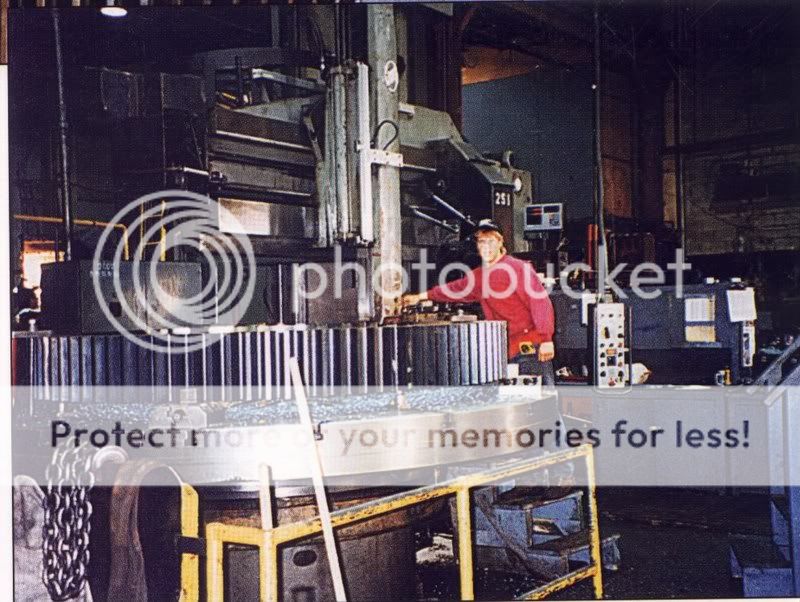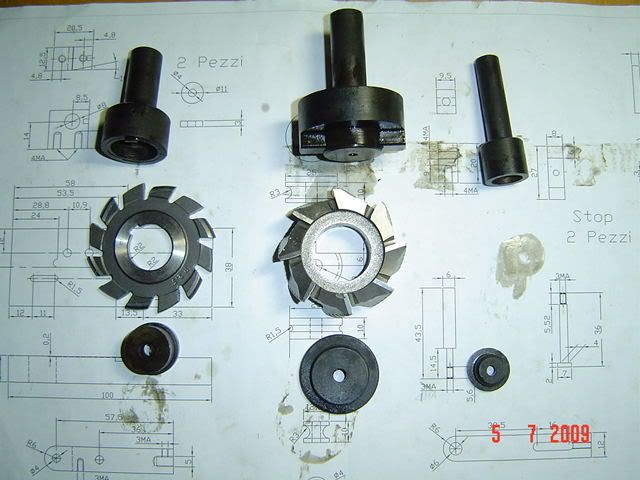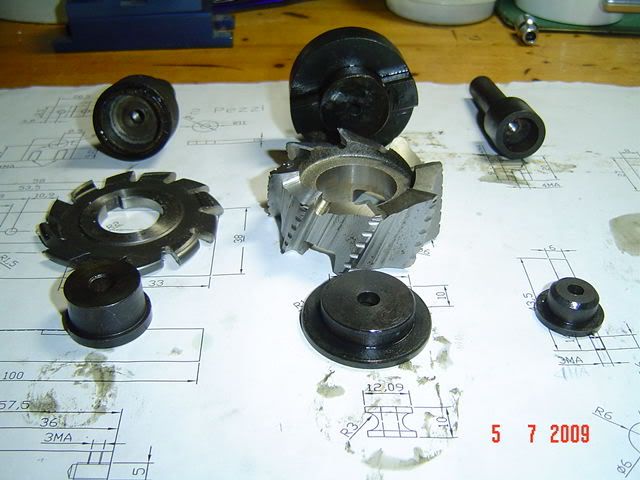Well this is getting way off topic, but I KNOW the originator of the thread
doesn't mind!

zeusrekning you reach that size by brute force until you get to within
.100" then it becomes a finesse thing. That same machine that you just
beat the crap out of is expected to cut a perfectly straight finish cut.
It WON'T! Finishing is a series of light finish cuts. It might cut on size
at the top, -.002 in the middle and back to on size at the bottom.
You would calculate that cutting arc in .0005" increments.
as the head was feeding down you would manually "bump" the tool into the
cut .0005" at a time to the center of the bore. From there you would bump
it away from the cut .0005" at a time until you ended up at the beginning
reading. The stock we worked with cost a bit more than what I work with
at home. You DIDN'T want to make an error!
One time we were making a large 8 foot OD brass bushing.
6 people had already told me that the casting cost $47,000
I said if one more person reminded me of that I'd part the damn thing in half.
A 5 minute break to the locker room resulted in SOMEONE taking a yellow
paint marker to it. The bold bright writing read:
"RICK I COST $47,000 DON'T F&*% ME UP!"
I never did find out who had added those little words of encouragement. LOL
We have a tubular inside mic set manufactured by Mitutoyo.
It's measuring rage is from 40" to 160"
It looks very much like this.
It's checked for calibration using only the 40" assembly against an inspected
40" Mitutoyo Outside Mic.
For any size with a tolerance of .005 or less it's readings are verified but checking the
mic with a 60", 84" or 120" vernier caliper. Yes we DO have Mitutoyo Vernier Caliper
that will measure up to 10 feet. It requires 3 people to use it at that distance.
One person holding the "dumb end" one in the middle to give the beam just enough
upward pressure to remove and sag, and the man at the "smart end" taking the
measurement. Everyone there has to know what they are dong to get an accurate
measurement. We're either good at it, or we've been very lucky. We've never had
a large part returned for an errant size.
For anything over 120" we use Pi Tape's
I had a post regarding them here.
Pi Tape
We have Pi Tape's that will read up to 15 feet or 180 inches.
I worked on that scale for almost 20 years and then decided to make model engines
at home. I've been a machinst for 30 years, but this scale is a whole different world!
Rick









